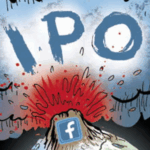Retail may have a classic, old-school image, but it’s leading the charge in AI adoption. While, historically, retailers have been slow to embrace new technology, the latest Marketing AI Institute research tells a different story.
Nonretail marketers report significant AI usage, with 28% using AI daily and 46% relying on it multiple times a week – totaling 74% who rely on AI regularly. However, retail marketers are outpacing them: 34% use AI every day, and 48% use it several times a week, underscoring the sector’s advanced adoption. Even more striking, 58% of retail organizations have fully integrated AI into their strategies, marking a ~15% increase compared to their nonretail counterparts.
Top players like Amazon, Walmart and Stitch Fix are proving just how transformative AI can be for everything from crafting personalized customer experiences to fine-tuning supply chains. Retail isn’t just keeping up; it’s setting the bar for what AI can achieve.
AI: More than just an efficiency play
Why is retail leading the way in AI adoption? Retailers don’t just see AI as a tool for boosting efficiency; it’s a strategic asset to drive customer loyalty and long-term growth. While other industries often focus on AI’s ability to streamline processes, retailers use it to enhance the entire customer experience and achieve key business goals like hitting revenue and retention targets.
Yes, AI improves efficiency. But Gartner predicts 30% of generative AI projects will be “abandoned” by 2025 due to a lack of ROI. Production efficiency alone isn’t going to cut it in today’s economy. True success with AI – and all marketing – comes from balancing efficiency with personalized experiences that drive real business results. Think of it as a three-legged stool: customer experience, productivity and business outcomes. Without one, you’re on the floor.
Retail leaders understand this well. Eighty-eight percent of them already believe AI will unlock more personalized customer experiences. But they aren’t just keeping up with AI; they’re wielding it strategically to meet the growing demands of both customers and investors.
For example, Michelle Crossan-Matos, Ulta’s CMO, told Fortune that personalized content is a key factor that’s grown its loyalty base. “For us, the reason why we keep growing our loyalty base is because of the content we serve. And you cannot serve content to 42 million loyalty members without AI enabling you to tailor and personalize.”
L.L. Bean sees AI directly impacting its bottom line, leading to double-digit lifts in its KPIs. Which adds up. “We saw $14-$15 million in analyzed revenue lift last year,” said L.L.Bean’s Devon Phelon. And its marketing and creative teams became more efficient to boot.
These leaders know it’s about building long-term customer relationships where marketing becomes a conversation, not just an announcement. And it works. “We’ve seen double-digit lifts across all of our key KPIs, like click-through rates, conversion rates and revenue per [email] send,” said Victoria’s Secret’s Lindsay Massey.
Can other industries keep up?
Retail may lead the way in AI adoption, but other industries are catching up quickly. Sectors like health care, finance and travel and hospitality are already using AI or are poised to do so. McDonald’s CEO Chris Kempczinski highlighted this shift during the company’s Q1 2024 earnings call, crediting AI for boosting both sales growth and customer satisfaction through AI-powered personalization. The sentiment resonates across sectors. As Scotiabank Global CMO Laura Curtis Ferrera told Forrester, “AI is going to completely change how we do marketing.”
As AI continues to gain momentum across industries, it’s expected to see an annual growth rate of 37.3% from 2023 to 2030, with marketing automation and data analytics emerging as key applications across almost every sector.
AI’s impact is inevitable, but how you harness it matters
AI’s influence is undeniable, and retail is setting a high bar. But it’s about more than just boosting productivity; it’s about transforming customer relationships to drive long-term success.
Marketers are catching on, with 64% saying mastering AI tools is key to staying ahead. Domino’s is a great example; they’ve made ordering pizza easier than ever. “With the advances in AI technologies and machine learning, we have the ability to offer a higher fidelity of that [personalized] experience than ever before,” SVP and Chief Digital Officer Christopher Thomas-Moore told Emarketer.
Retail is proving what’s possible. The question isn’t whether AI will transform industries; it’s how brands channel it to create the kind of customer experiences that fuel lasting growth and loyalty.
For more articles featuring Vivek Sharma, click here.
















